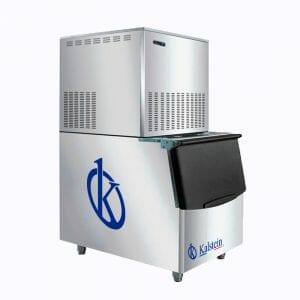All food preservation methods aim to stop the deterioration of food and maintain its good taste for as long as possible. Fresh, unprocessed foods always contain microorganisms that can cause spoilage. The most important organisms of deterioration are:
- Molds.
- Yeasts.
- Bacteria.
These organisms secrete enzymes that can break down proteins, fats, and starches. Microorganisms are especially likely to grow in slightly acidic foods such as legumes, fish, and meat. Thus, the likelihood of food poisoning increases. Most conservation methods aim to kill harmful microorganisms.
Some also deprive microorganisms of water, oxygen, and other substances needed to maintain life. Some make the environment less favorable to microorganisms (acidic conditions, low or high temperatures). In general, it is possible to distinguish between physical, biological and chemical conservation methods.
What does cold-storage food entail?
Refrigeration is a method of physical preservation of food in which it is stored at low temperatures to maintain the moisture inside the food in a liquid state. For this purpose, food is stored at temperatures between 0 °C and 10 °C. During cooling, microorganisms that can cause food poisoning and toxins may stop growing.
Unlike freezing or deep-freezing, the growth of susceptible organisms is only partially eliminated. Therefore, food can only be stored by this method for a limited time. On the other hand, it preserves the organic properties of food better than other storage methods.
The cooling temperature depends on each product, but it is important that it does not fall below 0°C to prevent food water from freezing. In addition to temperature, storage conditions, especially moisture, should be taken into account. An inappropriate environment can have the following consequences:
- Loss of organic properties of the product.
- Development of harmful microorganisms.
- Weight loss.
- Wilting and darkening.
Under what conditions are microorganisms that deteriorate food developed?
In addition to moisture and temperature, microorganisms also find ideal growth conditions in meat broth and milk, which spoil quickly as a result. In this sense, yeasts are developed especially in acidic and carbohydrate-containing media. In nature, they are mainly found in fruit, so the products made from it are at particular risk. A characteristic feature of yeasts is their ability to grow in the absence of air, in which case they cause fermentation.
Some individual forms also grow in foods with higher sugar concentrations (osmotolerant yeasts) or in salty media (halophilic yeasts, for example, cream yeasts). Its optimum growth is at 25 °C, but the highest temperatures are usually still tolerated by them. However, by cooling the temperature of the food, it can slow the development of this and other microorganisms, which find in these conditions, a hostile environment for their development and growth.
What is the importance of food conservation?
Industrial production of food inevitably requires longer time frames for distribution to the final consumer. In addition, many foods are kept in stock, so preventive measures for their preservation are of great importance. For example, in fishmongers it is common for fish and seafood to be placed on a bed of ice that preserves the previous freezing they had.
In other foods, the minimum durability dates printed on packaged foods provide a degree of safety. On the other hand, the more finely distributed foods and moisture they contain, the easier it is for them to spoil. Minced meat, for example, is attacked by bacteria much more quickly than a piece of uncut meat, so special requirements are set for the sale of minced meat. For example, minced meat cannot be sold outdoors, must always be processed at night, and the cold chain must be guaranteed, where ice provides an effective means of preservation.
Why choose Kalstein Ice Maker?
Cold food storage, which also uses ice, requires equipment that produces ice consistently, efficiently and in the necessary amount. In this regard, the manufacturer Kalstein makes available to the food sector a number of ice manufacturers, as can be seen in the link HERE, which meets all these requirements. HERE


